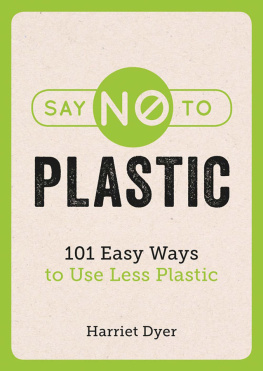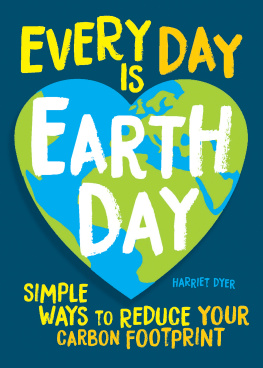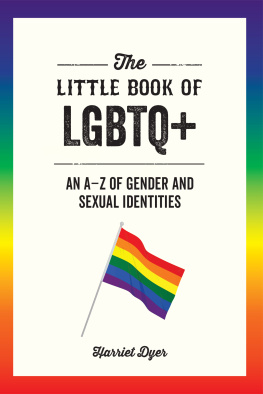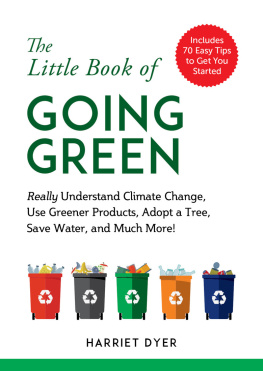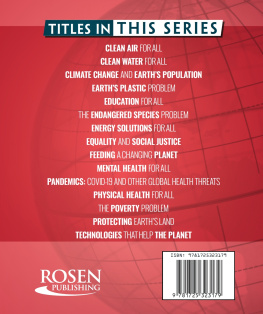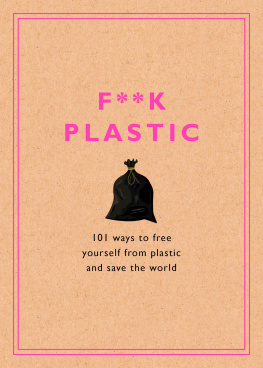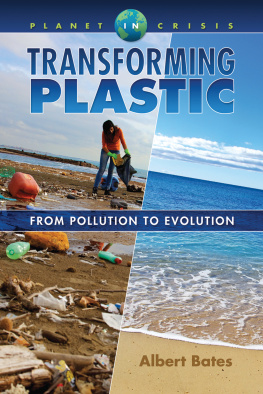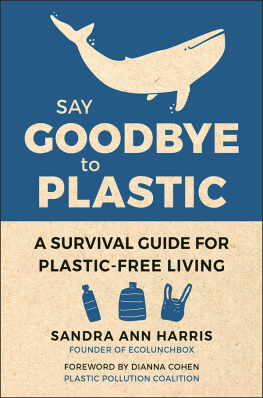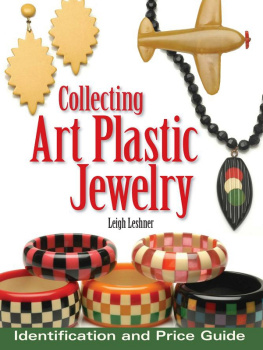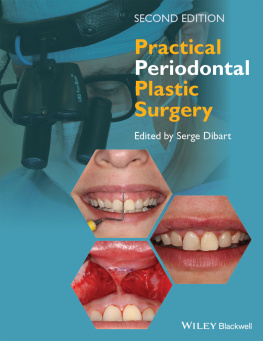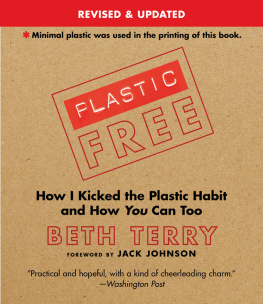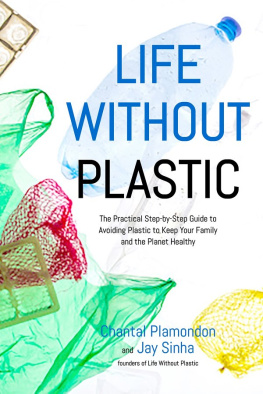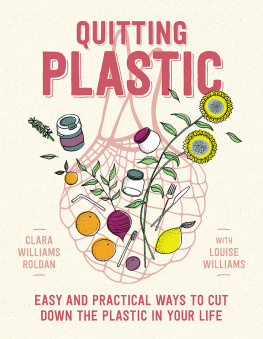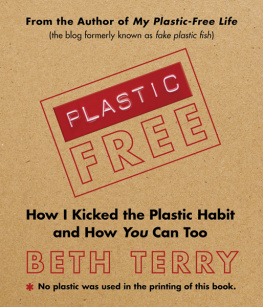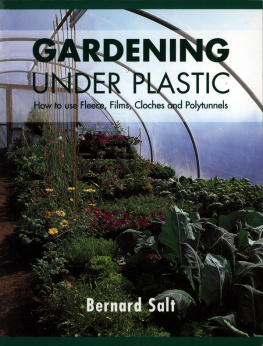SAY NO TO PLASTIC
Copyright Summersdale Publishers Ltd, 2018
Text by Abi McMahon
All rights reserved
No part of this book may be reproduced by any means, nor transmitted, nor translated into a machine language, without the written permission of the publishers.
Condition of Sale
This book is sold subject to the condition that it shall not, by way of trade or otherwise, be lent, resold, hired out or otherwise circulated in any form of binding or cover other than that in which it is published and without a similar condition including this condition being imposed on the subsequent purchaser.
An Hachette UK Company
www.hachette.co.uk
Summersdale Publishers Ltd
Part of Octopus Publishing Group Limited
Carmelite House
50 Victoria Embankment
LONDON
EC4Y 0DZ
UK
www.summersdale.com
eISBN: 978-1-78685-894-8
Substantial discounts on bulk quantities of Summersdale books are available to corporations, professional associations and other organisations. For details contact general enquiries: telephone: +44 (0) 1243 771107 or email: .
WHATS SO BAD ABOUT PLASTIC?
INTRODUCTION
If youre reading this then its likely that you want to cut down on your plastic consumption but just dont know where to start. After all, plastic is everywhere! the good news is that its easier than you think. In this book, you will find 101 little changes that can make a difference. Simply pick one, such as replacing your shampoo with solid shampoo or only buying loose vegetables, and try it for a week. If it works, try it for a month and then add another idea, building on your success. If youre finding that particular idea tricky, pick another.
This book focuses on helping you use less plastic. For that reason, it doesnt explore other eco-friendly factors, such as the carbon footprint from creating other materials. If youre interested in finding out more about that, there are lots of resources online. Successfully tackling our overuse of plastic in our everyday lives can be boiled down to the three main recycling principles: reduce, reuse and recycle. Almost all of the tips in this book teach you how to find second and third purposes for single-use plastics, how to appropriately recycle plastic and how to make better choices in order to reduce your plastic use.
We know that your life is busy, so weve added extra information to each tip to help you decide whether this plastic-reduction method is the best one for your lifestyle. Youll see little icons on each page. This is what they mean:
KEY
 | This is cheaper than the plastic-based alternative |
 | This option is widely available on the high street |
 | This is a do-it-yourself option |
 | This option reduces the total plastic you use |
 | This option is plastic-free |
 | This option extends the life of your plastic |
 | This option involves donating money |
 | This option involves donating your time |
 | This option involves a new way to do things |
In 2016 around 335 million tonnes of plastic were produced worldwide; equivalent to the weight of two million blue whales.
BIODEGRADABILITY TIMELINE
| 5 days1 month | VEGETABLES |
| 25 months | PAPER |
| 6 months | COTTON T-SHIRT |
| 15 years | WOOL SOCKS |
| 2540 years | LEATHER SHOES |
| 3040 years | NYLON FABRIC |
| 50100 years | TIN CANS |
| 80100 years | ALUMINIUM CANS |
| 500 years to forever | STYROFOAM CUP |
| 500 years to forever | PLASTIC BAGS |
| 1 million years | GLASS BOTTLES |
ENOUGH PLASTIC ENTERS LANDFILL EACH YEAR TO CIRCLE THE WORLD FOUR TIMES.
TEN PER CENT OF ALL WASTE IS PLASTIC.
EVERY YEAR OVER ONE MILLION TONNES OF PLASTIC END UP IN UK LANDFILL, AND IN THE US THE FIGURE IS A WHOPPING 28.9 MILLION TONNES.

EIGHT PER CENT OF THE OIL PRODUCTION WORLDWIDE IS USED TO MANUFACTURE PLASTIC, SO AS WE HEAD TOWARDS PEAK OIL WE CANNOT CONSIDER PLASTIC A SUSTAINABLE MATERIAL.

Around eight million metric tonnes of plastic ends up in the ocean every year.
Litter in the ocean is responsible for the deaths of around one hundred thousand marine mammals every year.
In addition to marine mammals, around one million sea birds die every year as a result of ocean debris.
Nurdles are tiny plastic pellets that all plastic products start life as. They often fall into the sea from container ships, creating widespread ocean litter, and are found on 73 per cent of UK beaches. A study in Orange County, USA, found them to be the most common beach contaminant. They do not decompose, but simply break into smaller pieces, and are often eaten by marine wildlife with damaging effects. Theyre so tiny that they are near impossible to clean from the oceans once they are in there.
Its not just the environment that can be harmed by plastic. Plastic is a processed combination of chemicals, with some plastics containing toxic or carcinogenic (cancer-causing) chemical compounds. Although plastic is slow to biodegrade, exposure to the sun and air can cause some plastics to degrade slightly, leaching hazardous substances into the earth or water around it. If humans come into contact with these substances, by taking a drink from a plastic bottle thats been sitting in the sun for example, they could be exposed to the chemicals.

The first step to reducing plastic is knowing what you can recycle and reuse. Here is a quick guide to the common types of plastic:
- PET or PETE (Polyethylene terephthalate) mainly clear drinks bottles and some food packaging. Recyclable but not reusable.
- HDPE (High-density polyethylene) bottles used for things like milk, washing-up liquid and cosmetics. Recyclable and reusable.
- PVC (Polyvinyl chloride) clear food wrapping, shower curtains, toys. Difficult to recycle.
- LDPE (Low-density polyethylene)

